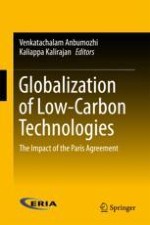2017 | OriginalPaper | Buchkapitel
5. INDC and Low-Carbon Technology Deployment Scenarios: Malaysia
verfasst von : V. G. R. Chandran Govindaraju
Erschienen in: Globalization of Low-Carbon Technologies
Verlag: Springer Singapore
Aktivieren Sie unsere intelligente Suche, um passende Fachinhalte oder Patente zu finden.
Wählen Sie Textabschnitte aus um mit Künstlicher Intelligenz passenden Patente zu finden. powered by
Markieren Sie Textabschnitte, um KI-gestützt weitere passende Inhalte zu finden. powered by
